Ridley X-Bow 10 (video) review
Ridley’s X-Bow is towards the bottom end of the brand’s range, but nevertheless its spec is impressive
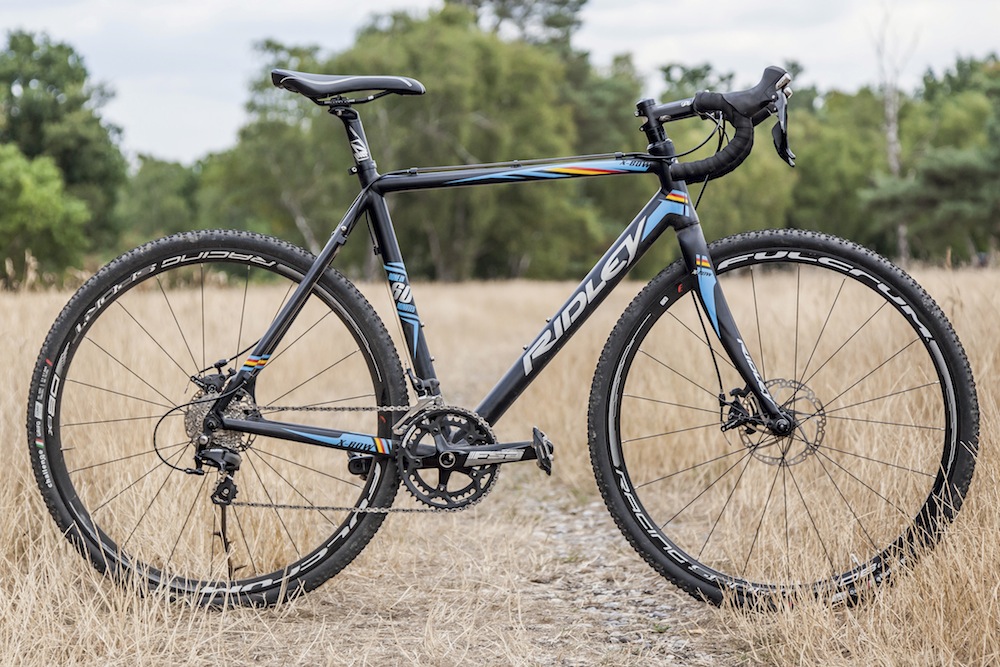
A good value starter cyclocross bike with the versatility to be used for commuting duties too
-
+
Superb off-road handling
-
+
Quality traditional build
- +
-
-
Highish gearing for off-road use
-
-
A bit heavy
You can trust Cycling Weekly.

Belgium is the home of cyclocross and Ridley is the pre-eminent Belgian cyclocross bike manufacturer with its top-flight bikes raced by many professionals. The X-Bow 10 disc has the highest spec of its alloy X-Bow range, with a Shimano 105 22-speed drivechain and TRP Spyre mechanical disc brakes. There are another three cyclocross ranges above it with 13 bikes (of which five are sold in the UK), showing just how much depth there is in Ridley’s stable.
There are three X-Bows: the Tiagra-equipped X-Bow 20 comes in canti and disc versions, while the X-Bow 10 which we have for test is speced with 105 and mechanical disc brakes.
The frame
Ridley’s frame is made of 7005 aluminium alloy. With a wheelbase of just over 100cm and a 72 degree headtube angle, it’s designed for a stable ride – important off road where ability to hold a line and steer through loose conditions is vital. The frame is predominantly black with blue accents but subtly incorporates the Belgian flag in its design.
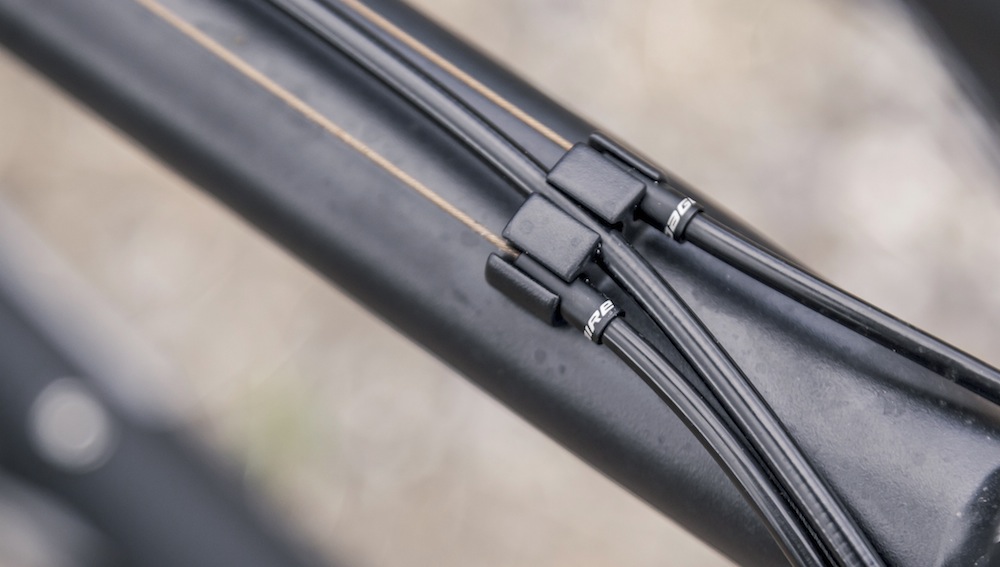
The three rear cables are routed across the top of the top tube. This is a classic cyclocross design which keeps them away from mud and obstacles to make shifting as efficient as possible and keeps them out of the way when shouldering the bike. The bottom bracket is a conventional threaded design and the frame has post mounts for the brakes and is equipped with mudguard eyelets. The forks have carbon blades, again with mudguard eyelets, and a tapered alloy steerer.

There are mudguard mounts front and rear and rack mount bosses at the top of the seat stays. The frame comes equipped with two sets of bottle bosses: not a given on cross bikes.
>>> How to get into cyclocross
Ridley quotes a frame weight for a size medium of 1710 grams, with a fork weight of around 730 grams, so the X-Bow is no lightweight.
Components
The X-Bow has a 22-speed Shimano 105 drivechain with 105 shifters, front and rear mechs and cassette. It’s fitted with an FSA Gossamer chainset with 46/36 chainrings – classic cyclocross ratios. The bottom bracket runs on megaexo bearings and there’s a KMC chain.

The X-Bow uses TRP Spyre mechanical disc brakes. Unlike many mechanical disc brakes, this design presses the pads against the rotor from both sides, making set-up potentially a bit easier. The brake discs are 160mm at the front and 140mm at the rear, as there’s more stopping power needed at the front than the back. Other components – bars, stem, seatpost, saddle – come from Ridley’s in-house 4ZA brand.
Wheelset
Wheels are Fulcrum Racing Sport, which have unbutted spokes and a total weight of around 1900 grams. They are likely to be robust and Fulcrum wheels are well built and easy to service.
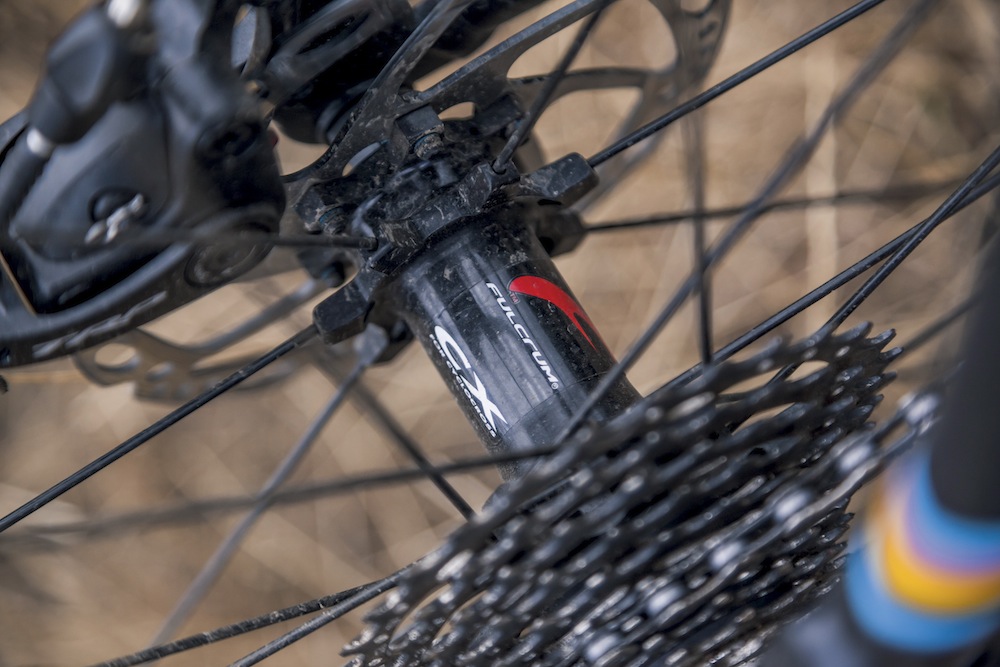
The wheels are laced with 18 spokes in the front wheel. These are crossed on the disc side but radial on the other to better handle the braking forces generated by the disc. The rear wheel has 24 spokes arranged in Fulcrum’s 2:1 pattern. Tyres are Challenge Grifo Plus 32mm – another classic cyclocross choice with a tread pattern which grips well in mixed off-road conditions.
>>> On-board footage from an under-6's cyclocross race (video)
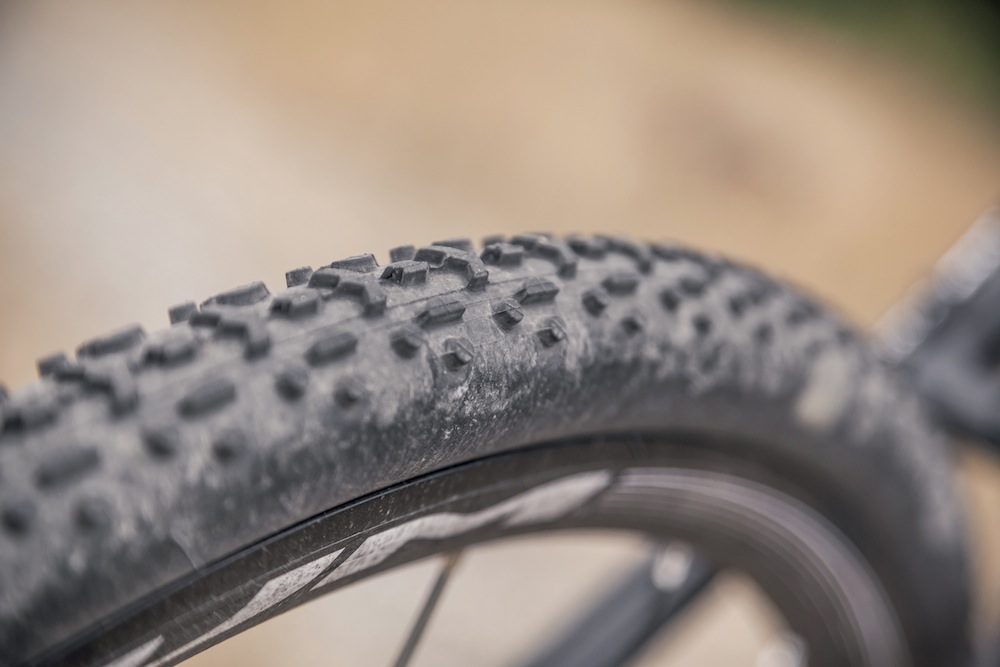
Riding
Heading out onto bridlepaths, Ridley’s cyclocross heritage is immediately apparent. The X-Bow feels super-planted and encourages fast and confident riding over rutted and uneven surfaces. The stable ride means that it’s easy to control and I never felt any sideslip even when paths were damp after rain. Ridley has really got its cyclocross geometry completely dialled. Shouldering the bike also felt comfortable. Although the top tube is not too wide it somehow seems to be shaped just right not to dig in.
>>> Guide to riding cyclocross

Part of the Ridley’s off-road competence is probably down to the Challenge tyres. There’s a reason why they are a cyclocross classic – they really cling on well and feel very grippy over rocks and damp ground. The wheels also belie their weight, spin well and feel very solid despite their relatively low spoke count.
The X-Bow stops well too. The TRP Spyre mechanical disc brakes provide solid braking on steep descents, although they require a bit of finger power to use.
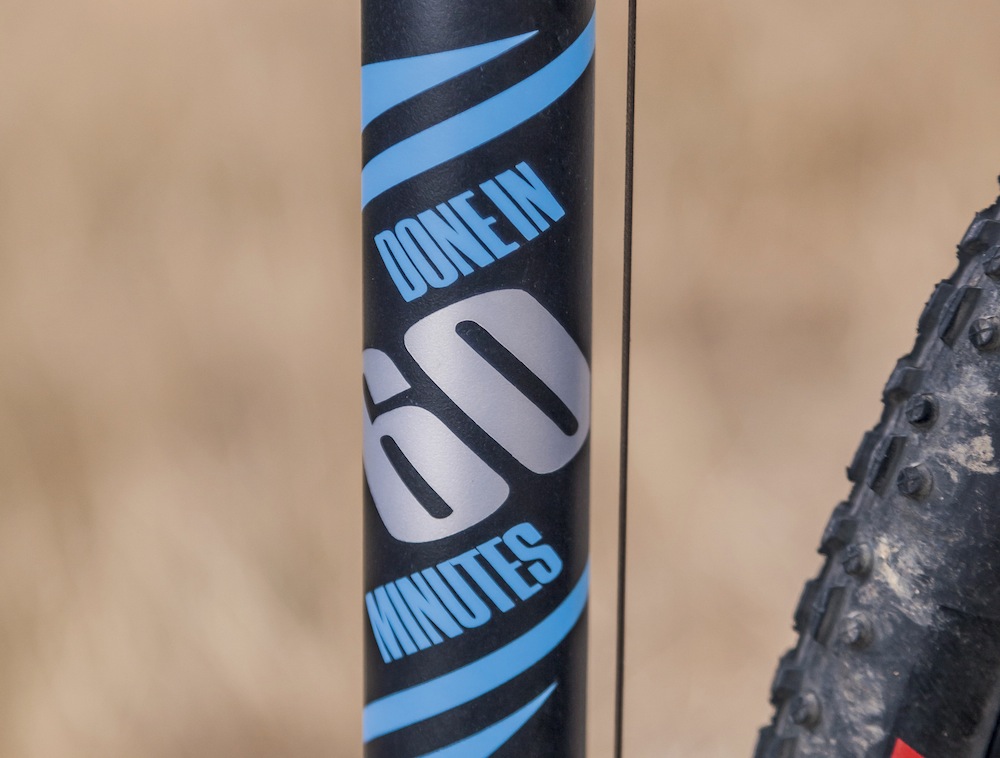
On-road you can make steady progress, with the bike feeling lively and responsive enough and that controlled off-road set-up translating to a non-twitchy ride. By cyclocross standards, there’s also quite a lot of top end speed from the 46/11 top ratio. In contrast the 36/28 lowest ratio is quite high and I found myself dismounting often for obstacles and ascents.
Watch: cyclocross bike buyer's guide
Ridley has definitely planned for mud with huge amounts of clearance both front and rear. There’s a bridge between the chainstays just behind the bottom bracket though, which could potentially promote clogging in more muddy conditions. This could also interfere with front shifting, which uses a nylon pulley to route the gear wire running down from the top tube through 180 degrees to operate the conventional front derailleur.
Value
The X-Bow 10 Disc is a quality ride at a decent price. It's well specced with sensible component choices. It's a good all-rounder great for commotion or just for off-road exploring.
On the other hand, if you aim to get into competitive cyclocross racing, you are likely to soon want to get a lighter more race-focussed machine. This probably means a new bike as the X-Bow is not the best option for component upgrades.

Thank you for reading 20 articles this month* Join now for unlimited access
Enjoy your first month for just £1 / $1 / €1
*Read 5 free articles per month without a subscription

Join now for unlimited access
Try first month for just £1 / $1 / €1
Get The Leadout Newsletter
The latest race content, interviews, features, reviews and expert buying guides, direct to your inbox!
Paul started writing for Cycling Weekly in 2015, covering cycling tech, new bikes and product testing. Since then, he’s reviewed hundreds of bikes and thousands of other pieces of cycling equipment for the magazine and the Cycling Weekly website.
He’s been cycling for a lot longer than that though and his travels by bike have taken him all around Europe and to California. He’s been riding gravel since before gravel bikes existed too, riding a cyclocross bike through the Chilterns and along the South Downs.
-
 'This is the marriage venue, no?': how one rider ran the whole gamut of hallucinations in a single race
'This is the marriage venue, no?': how one rider ran the whole gamut of hallucinations in a single raceKabir Rachure's first RAAM was a crazy experience in more ways than one, he tells Cycling Weekly's Going Long podcast
By James Shrubsall Published
-
 Full Tour of Britain Women route announced, taking place from North Yorkshire to Glasgow
Full Tour of Britain Women route announced, taking place from North Yorkshire to GlasgowBritish Cycling's Women's WorldTour four-stage race will take place in northern England and Scotland
By Tom Thewlis Published
-
 Positive signs for UK bike industry as Halfords cycling sales grow
Positive signs for UK bike industry as Halfords cycling sales growRetailer admits that the impact of Donald Trump's tariffs remains to be seen
By Tom Thewlis Published